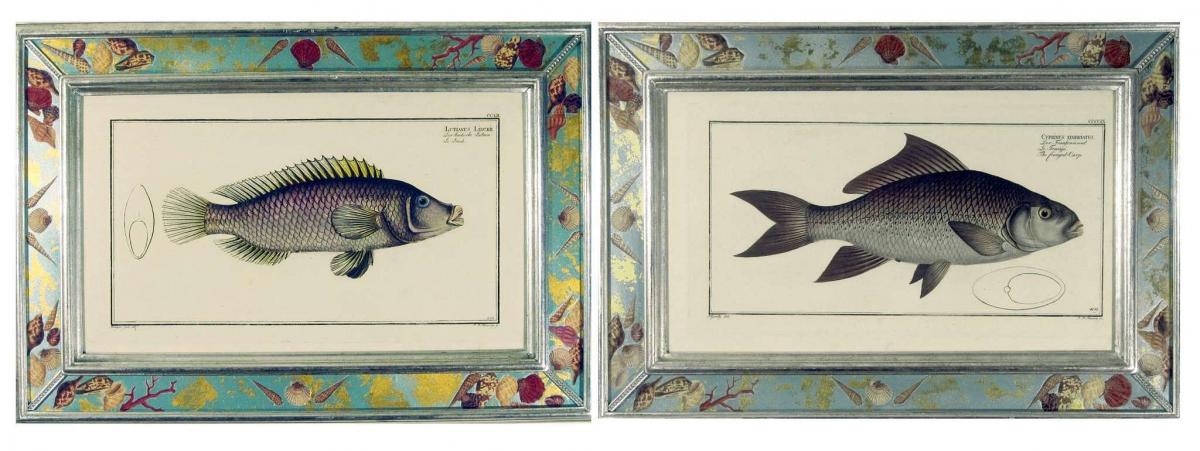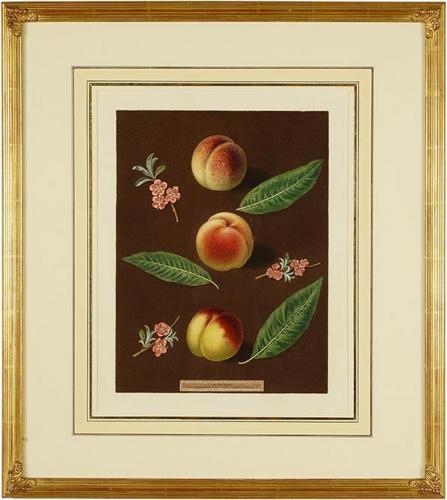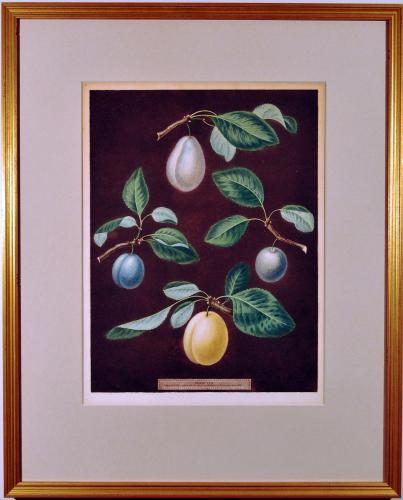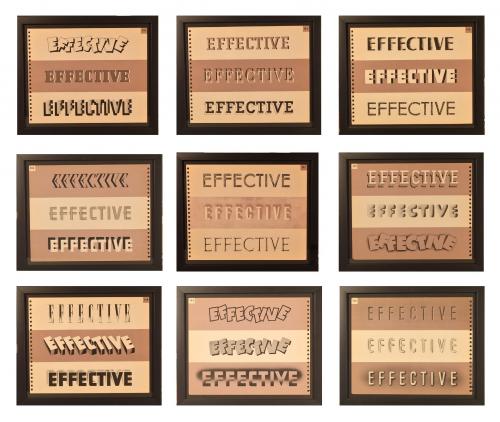

Price on application
This object is eligible for a Certificate of BADA Provenance
The BADA Standard
- Since 1918, BADA has been the leading association for the antiques and fine art trade
- Members are elected for their knowledge, integrity and quality of stock
- Our clients are protected by BADA’s code of conduct
- Our dealers’ membership is reviewed and renewed annually
- Bada.org is a non-profit site: clients deal directly with members and they pay no hidden fees
Marcus Bloch.
Engravings of Fish by Marcus Bloch, (Two).
Circa 1780.
Paper.
A fine pair of engravings of fish by Marcus Bloch.
Bloch issued folio and octavo prints and each specimen was engraved on a copper plate and then hand-coloured with watercolors. The plates contain the names of each fish in several languages. (http://www.printdealers.com/artist_template.cfm?id).
Reference: At the age of 47, the German surgeon Marcus Elieser Bloch began to study the fishes of Germany, evidently as a hobby. "Chance gave me an occasion" Bloch remembered, "to apply myself to the study of fishes. Someone sent me a great Maräne, a species of salmon, from Lake Madui. I opened my Linnaeus to read what he said of it. But I saw, to my great astonishment that he had not known of this Maräne "This omissionexcited my curiosity...".
Thus began a productive life of ichthyology. Bloch's 1782 volume, Allgemeine Naturgeschichte der Fische, is considered to be one of the most important in ichthyological literature, even two centuries after its publication. The beautiful hand-colored illustrations below are from this publication (American Museum of Natural History-http://www.amnh.org/learn/pd/fish_2/id/).
Marcus Elieser Bloch - The life of an unusual man and respected fish scientist
Summary: Marcus Elieser Bloch was one of the first Jewish medical doctors in Berlin, however, he is still remembered today as a famous fish scientist and as one of the most important founders of modern ichthyology.
Born in 1723 close to Ansbach in indigent family circumstances and educated traditionally Jewish, he succeeded in liberating from orthodox doctrines and to evolve to a successful physician, natural scientist and representative of the Jewish Enlightenment movement.
Today, his famous fish books are not only bibliophile treasures, but they give evidence of the creative power of an unusual man, a friend of Moses Mendelssohn and member of many international academies and scientific associations. He died 1799 in the Bohemian town Karlsbad.
(Lesser, R. http://www.ichthyologie.de/English/Proceedings/Lesser_/lesser_html).
Marcus Elieser Bloch (1723-1799) was a German medical doctor and naturalist. He is generally considered one of the most important ichthyologists of the 18th Century.
Bloch was born in Anspach and practised as a physician in Berlin. He is best known for his encyclopedic work in ichthyology. Between 1782 and 1795 he published his Allgemeine Naturgeschichte der Fische, a 12 volume, beautifully illustrated comprehensive work on fish.
The first three volumes describe fishes in Germany and were entitled Oeconomische Naturgeschichte der Fische Deutschlands, the remaining volumes dealt with fished from other parts of the world and were entitled Naturgeschichte der ausländischen Fische.
Bloch's collection of about 1500 specimens is today preserved at the Museum for Natural History (Naturhistorisches Museum) of the Humboldt University in Berlin.
Dimensions
13 3/4 inches x 20 inches wideStock number
NY07381The BADA Standard
- Since 1918, BADA has been the leading association for the antiques and fine art trade
- Members are elected for their knowledge, integrity and quality of stock
- Our clients are protected by BADA’s code of conduct
- Our dealers’ membership is reviewed and renewed annually
- Bada.org is a non-profit site: clients deal directly with members and they pay no hidden fees




